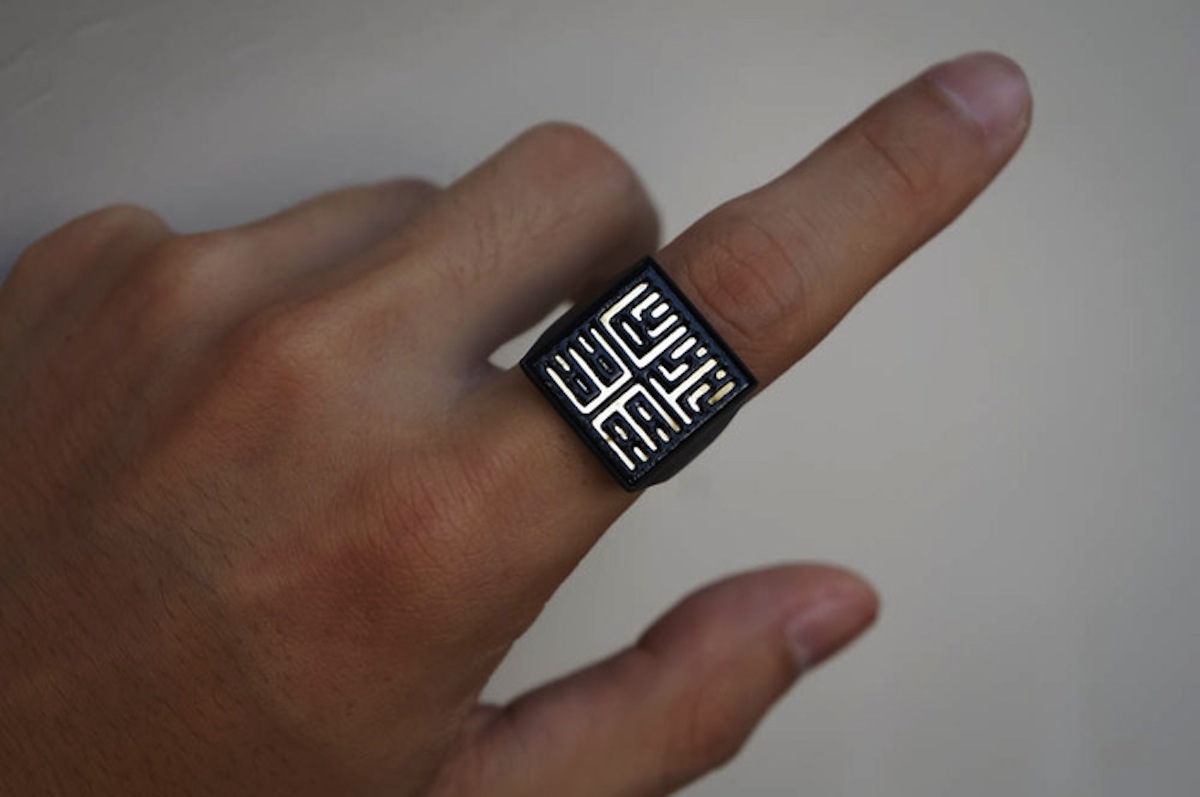MBTA ‘Sesame Rings’ Are Shipping Out to Customers

Photo via Sesame Ring
By the end of the month, some MBTA riders will be casually passing through the fare gates without ever having to dig into their pockets to find their CharlieCard or train ticket.
The makers of the “Sesame Ring,” a piece of wearable technology that has a CharlieCard’s RFID chip embedded inside, are shipping out their first batch of more than 1,000 rings to customers who backed the project on Kickstarter last year. “Hopefully, it won’t be too uncommon to see someone punching their ring into the turnstile for the T,” said Chris Benson, one of Sesame Ring’s creators.
The rings were a collaborative effort bolstered by undergraduate MIT students and the Singapore University of Technology and Design.
Benson, who called this the company’s “beta stage,” said they will be looking for feedback from their first set of customers before starting to produce additional rings for sale to the general public. “We want to find out aspects that they like about it or don’t like, and from there we will be mass-producing lots of the rings to get them out to as many people that want them as possible,” he said, estimating that by June more will be available to riders.
The idea for the rings came out of a group at MIT, many of whom said they were often frustrated about missing their train because they couldn’t dig out their wallets containing their CharlieCards in time to pass through the gates.
After creating some prototype designs for personal use, the rings were well received, and people started asking for their own. Once they realized the potential based on the initial popularity, it inspired the group to launch the Kickstarter campaign. That fundraising effort was indicative of the type of trend they were on to, after they collected nearly $20,000 in donations by the Kickstarter deadline—almost three-times of what they expected to raise.
“Hopefully people appreciate them,” Benson said.
Like any startup, Benson said the company faced some challenges along the way, including manufacturing problems—the rings were made on 3-D printers—shipping issues, and a demand for the product that they didn’t anticipate.
These setbacks kept the rings from landing in the hands of the first set of customers nearly three months longer than intended. “We wanted to get them out before Christmas time, but we didn’t get them out until now,” Benson said. “I think that whenever you’re dealing with a product, there are always going to be unforeseen delays. But we have been communicating with customers and backers, and now they’re assembled and ready to go.”
While the team was met by roadblocks, one thing that helped them push through was the encouragement from the MBTA. The idea of the Sesame Ring would not have come to life without the T’s blessing, because the transit agency ultimately controls the RFID chip required for the ring to actually work. The team at Sesame Ring worked with the MBTA to make sure the rings functioned properly, before going out to their backers. To do that, each of the chips implanted into the customized rings had to be entered into the MBTA’s database, so passengers can reload them when necessary.
The arrangement is similar to one the T has with the Cambridge Innovation Center, where cards are purchased from the card manufacturing company that also does the encoding. When the Sesame Ring project first started, the T said they were looking forward to the final design. Now, they continue to applaud the concept. “The MBTA supports efforts that make it easier for customers to use public transportation,” said MBTA Spokesman Joe Pesaturo.
From here, Benson said the creators of the ring are thinking “intelligently” as they explore ways to expand on the design. Future projects will likely include the option of having a transferable version that can be embedded on bracelets, smartphone covers, or even key chains. Benson said they are already talking with various companies and manufacturers about how they can help the Sesame Ring evolve.
“We are looking to expand on the physical and electronic design,” he said. “We are trying to figure out what people are actually interested and are hoping to scale intelligently here. We have had a lot of interest form a bunch of different sources. But we want to make sure that when we do these things we maintain a high level of quality. We want to deliver on that promise.”

